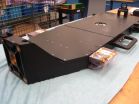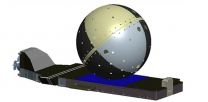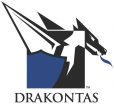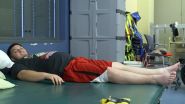HOUSTON, TX, April 08, 2014 (Press-News.org) It used to be that building and launching a working satellite was an enormously expensive and complex undertaking, feasible only for governmental and military agencies. But the CubeSat revolution of the past decade has placed satellite technology within reach of private companies, universities and even unaffiliated individuals. That revolution has been boosted by the existence of the International Space Station, which provides an additional launching platform enabled through regular commercial cargo flights.
CubeSats are a class of research spacecraft called nanosatellites. The cube-shaped satellites measure about 4 inches on each side, have a volume of about 1 quart and weigh less than 3 pounds.
Putting the tiny satellites into orbit from the space station isn't as simple as shoving them out an airlock. It requires a special apparatus called a CubeSat deployer. This tool places a satellite into position to be grabbed by one of the space station's robotic arms, which places the CubeSat deployer into the correct position to release the miniature satellites into their proper orbits. At present, two CubeSat deployers operate aboard the station: the Japanese Experiment Module (JEM) Small Satellite Orbital Deployer (J-SSOD) and the NanoRacks CubeSat Deployer. The upcoming launch of the SpaceX-4 commercial resupply mission, currently scheduled for August will enhance the space station's satellite deployment capabilities with the delivery of Cyclops. This tool, also known as the Space Station Integrated Kinetic Launcher for Orbital Payload Systems (SSIKLOPS), will provide still another means to release other small satellites from the orbiting outpost.
Daniel Newswander, an engineer with NASA's Johnson Space Center in Houston, said this addition will "fill out the quiver" of existing space station satellite deployment capabilities. The project is a joint effort of the International Space Station Program at Johnson and the Department of Defense's Space Test Program.
"Satellites come in all shapes and sizes," Newswander noted. "We were aware of several satellites that didn't really fit into the CubeSat launchers. We are deploying a spherical satellite as well as a cubic one that does not fit in the existing launchers. We are attempting to complement the other deployers that have been developed so that the [space station] has several deployment options to choose from. We are targeting satellites in the 50 to 100 kg [110 to 220 lb] class, especially those which geometrically do not fit in the existing launchers."
CubeSats have varied missions, and this year has been a particularly busy one for deployment of the satellites from the space station. Whether looking to help with imaging Earth for weather and ground data or advancing communications capabilities, the ability to set these satellites into orbit from the space station is the first step to enabling their missions. The resulting technology developments may contribute to advances in satellite technology for commercial use while enhancing Earth observation techniques.
Camille Alleyne, assistant space station program scientist, explained: "Because of the relatively low costs to build this technology, the demand for the CubeSat deployment capability has increased dramatically. Adding this third deployer as a space station facility allows us to meet demand and demonstrates the value of the unique platform for both space research and STEM education."
Cyclops will operate from the JEM and take advantage of the airlock's existing slide table. Newswander said, "The launcher will be stowed inside the [space station] for use whenever a satellite is ready to be deployed. Cyclops is placed onto the airlock slide table with the attached satellite and processed through to the external environment. Cyclops, with its attached satellite, is subsequently grasped by the robotic arm and taken to the deployment position. Cyclops then deploys the satellite and is returned to the airlock where it is processed back through and stowed internally for future utilization. Our design utilizes the Japanese robotic arm but does have the capability to use the [station's] main robotic arm if necessary."
It took Cyclops less than two years to launch. The space station program office approved the concept in October 2012, and the facility was ready for flight by spring of 2014. "It's been very rewarding, yet challenging at the same time," Newswander remarked. "You want to move as fast as you can because everyone's excited for the capability, but you need to ensure you do it right. So it's a continual tradeoff."
Newswander described one challenge: "how do you certify something in an environment that you can't replicate on Earth?" The answer is found in a great deal of engineering rigor, analysis, testing, safety assessments, verification and quality assurance. "You focus on applying the proper engineering and safety practices and processes to the design. We're trying to maximize the usable envelope available in the airlock, which is not something that anyone has really tried to do for satellite deployments. That, coupled with the challenges of satellite deployment from an orbiting space station really pushes your boundaries."
When it becomes operational later this year, the Cyclops deployer not only will add a permanent enhancement to the capabilities of the station, but perhaps it also will serve as a model for further technological innovation. "We built something that should be up there for the duration of the station," Newswander noted. "It is designed to accommodate several deployments a year, so we anticipate that it's going to be able to handle whatever need the [space station] community requires. We don't know if that will drive second generation designs; but, if someone comes forward in the future and takes an idea that we started off with and makes it better, we would welcome the enhanced capabilities. We consider the [space station] to be an invaluable resource not only to NASA but to the entire international community."
Mark Wolverton
International Space Station Program Science Office
Meet Space Station's Small Satellite Launcher Suite
A special apparatus called a CubeSat deployer places a satellite into position to release the miniature satellites into their proper orbits.
2014-04-08
ELSE PRESS RELEASES FROM THIS DATE:
TurboTitleLoan.com's New Business Model Highlights Differences Among Lenders
2014-04-08
To further separate themselves from other auto title loan lenders and to offer consumers a fair and affordable product, TurboTitleLoan.com, a leader in online auto title loans, has made significant changes to their business model. The most noteworthy change is to interest rates, which are now the lowest in the industry. New website features are more interactive, and the 100% online process blends convenience and savings at the highest level.
High interest rates are a constant source of concern for consumers when dealing with the auto title loan industry. Physical title ...
Rabbit TV Strikes First on Web Content Deals at NAB 2014
2014-04-08
On the first day of the NAB Show in Las Vegas, Rabbit TV has already begun amassing a huge amount of web content deals out of the gate thanks to its newly announced Content Partnership Program. The program, which offers a 100% revenue-share turnkey solution for targeted web content delivery, has proven to be a massive success with the hundreds of producers at the show seeking to monetize their content, which generally falls into one of Rabbit TV's monetizable categories:
- Programming that is unable to make it on major networks
- Niche special interest content seeking ...
Mobile Apps Help Public Safety Personnel Respond Faster and More Effectively to Emergencies
2014-04-08
The recent shooting at Fort Hood and mudslide in Washington underscore the critical need for improved communication and more effective team coordination. Philadelphia-based software company Drakontas LLC is working with law enforcement and emergency responders to develop unique software tools to address this critical need.
Drakontas' DragonForce app runs on smartphones, tablets and web browsers and is used by public safety teams to more quickly and effectively respond to both day-to-day and emergency incidents. By utilizing DragonForce's collaborative tools, emergency ...
Korman Residential Acquires Fifth Apartment Community in Delaware
2014-04-08
Korman Residential Properties, Inc. has acquired The Villas, a 240-unit garden style apartment community located at 21 Villas Drive, New Castle, Delaware. The sale was brokered by Ken Wellar of Rittenhouse Realty Advisors.
Built in 1973, the property consists of 12 three-story multifamily buildings with a pool and playground located on 14.04 acres in the Wilmington Metro submarket. The highly desirable unit mix is comprised of 20% one-bedroom and 80% two-bedroom apartments with fully equipped kitchens and balconies or patios. The property is ideally located in New Castle ...
Spinal stimulation helps 4 patients with paraplegia regain voluntary movement
2014-04-08
Four people with paraplegia are able to voluntarily move previously paralyzed muscles as a result of a novel therapy that involves electrical stimulation of the spinal cord, according to a study funded in part by the National Institutes of Health and the Christopher & Dana Reeve Foundation. The participants, each of whom had been paralyzed for more than two years, were able to voluntarily flex their toes, ankles, and knees while the stimulator was active, and the movements were enhanced over time when combined with physical rehabilitation. Researchers involved in the study ...
Snowstorms and power outages present elevated risk for carbon monoxide poisoning
2014-04-08
Ann Arbor, MI, April 8, 2014 – While preventable, carbon monoxide poisoning is a serious and sometimes fatal condition. Large weather events, such as snowstorms and heavy storms that cause power outages, can lead to an increase in the number of reported carbon monoxide exposures. Researchers from Hartford Hospital in Hartford, Connecticut explored the link between these major storms and the rise in carbon monoxide exposure cases. They found that portable generators were the most common source of carbon monoxide exposure after storms which resulted in power losses; car exhaust ...
Antimicrobial from soaps promotes bacteria buildup in human noses
2014-04-08
An antimicrobial agent found in common household soaps, shampoos and toothpastes may be finding its way inside human noses where it promotes the colonization of Staphylococcus aureus bacteria and could predispose some people to infection. Researchers at the University of Michigan report their findings this week in a study published in mBio®, the online open-access journal of the American Society for Microbiology.
Triclosan, a man-made compound used in a range of antibacterial personal care products such as soaps, toothpastes, kitchen surfaces, clothes and medical equipment, ...
Breakthrough therapy allows 4 paraplegic men to voluntarily move their legs
2014-04-08
Four young men who have been paralyzed for years achieved groundbreaking progress — moving their legs — as a result of epidural electrical stimulation of the spinal cord, an international team of life scientists reports today in the medical journal Brain.
The study, conducted by researchers from the University of Louisville, UCLA and the Pavlov Institute of Physiology, was funded in part by the Christopher and Dana Reeve Foundation and the National Institutes of Health.
All four participants were classified as suffering from chronic, motor complete spinal cord injuries ...
From athletes to couch potatoes: Humans through 6,000 years of farming
2014-04-08
Human bones are remarkably plastic and respond surprisingly quickly to change. Put under stress through physical exertion – such as long-distance walking or running – they gain in strength as the fibres are added or redistributed according to where strains are highest. The ability of bone to adapt to loading is shown by analysis of the skeletons of modern athletes, whose bones show remarkably rapid adaptation to both the intensity and direction of strains.
Because the structure of human bones can inform us about the lifestyles of the individuals they belong to, they can ...
New ammunition in the fight against type 2 diabetes
2014-04-08
Gastric banding can play a vital role in the treatment of type 2 diabetes in people who are overweight and not obese, according to new research.
The Monash University study, led by Emeritus Professor Paul O'Brien and Dr John Wentworth from the Centre for Obesity Research and Education (CORE), has determined that weight loss surgery (gastric banding) for overweight people with diabetes had a profound impact on the illness.
The research has been released today in the prestigious medical journal The Lancet Diabetes and Endocrinology.
"This is the first randomised controlled ...
LAST 30 PRESS RELEASES:
Harm reduction vending machines in New York State expand access to overdose treatment and drug test strips, UB studies confirm
University of Phoenix releases white paper on Credit for Prior Learning as a catalyst for internal mobility and retention
Canada losing track of salmon health as climate and industrial threats mount
Molecular sieve-confined Pt-FeOx catalysts achieve highly efficient reversible hydrogen cycle of methylcyclohexane-toluene
Investment in farm productivity tools key to reducing greenhouse gas
New review highlights electrochemical pathways to recover uranium from wastewater and seawater
Hidden pollutants in shale gas development raise environmental concerns, new review finds
Discarded cigarette butts transformed into high performance energy storage materials
Researchers highlight role of alternative RNA splicing in schizophrenia
NTU Singapore scientists find new way to disarm antibiotic-resistant bacteria and restore healing in chronic wounds
Research suggests nationwide racial bias in media reporting on gun violence
Revealing the cell’s nanocourier at work
Health impacts of nursing home staffing
Public views about opioid overdose and people with opioid use disorder
Age-related changes in sperm DNA may play a role in autism risk
Ambitious model fails to explain near-death experiences, experts say
Multifaceted effects of inward foreign direct investment on new venture creation
Exploring mutations that spontaneously switch on a key brain cell receptor
Two-step genome editing enables the creation of full-length humanized mouse models
Pusan National University researchers develop light-activated tissue adhesive patch for rapid, watertight neurosurgical sealing
Study finds so-called super agers tend to have at least two key genetic advantages
Brain stimulation device cleared for ADHD in the US is overall safe but ineffective
Scientists discover natural ‘brake’ that could stop harmful inflammation
Tougher solid electrolyte advances long-sought lithium metal batteries
Experts provide policy roadmap to reduce dementia risk
New 3D imaging system could address limitations of MRI, CT and ultrasound
First-in-human drug trial lowers high blood fats
Decades of dredging are pushing the Dutch Western Scheldt Estuary beyond its ecological limits
A view into the innermost workings of life: First scanning electron microscope with nanomanipulator inaugurated in hesse at Goethe University
Simple method can enable early detection and prevention of chronic kidney disease
[Press-News.org] Meet Space Station's Small Satellite Launcher SuiteA special apparatus called a CubeSat deployer places a satellite into position to release the miniature satellites into their proper orbits.





